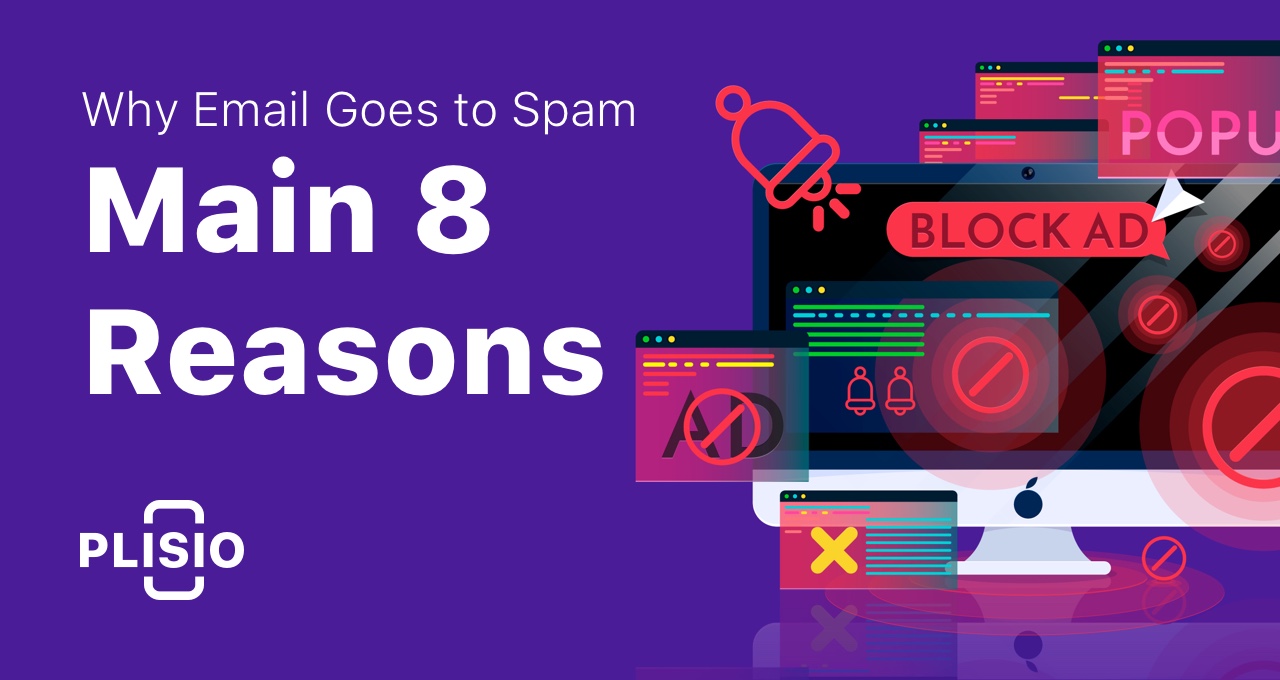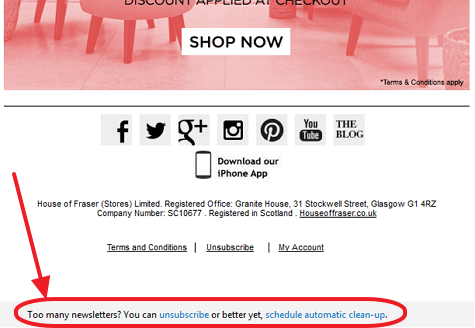8 Reasons Why Your Company’s Email Goes to Spam

The Plisio team is interested in your business growth, sales and efficiency. You may have already read why cryptocurrency is beneficial to your business. Still, a payment gateway alone is not sufficient for your business success.
Today we launch a new series of articles about different aspects of doing business online. We’re going to begin with the not very obvious but quite important thing - email marketing. We’d like to give you some advice on how to prevent your email from going to spam thus improving its conversion rate and boosting sales.
Here are the 8 main reasons why your client won’t read an email as it’s gone to spam.
You didn’t get the permission to send email
According to the international email marketing rules, you have to get the permission to send emails to users. You can request the permission when a user registers on the website or places an order. For instance, it can look like this: 
Don’t use addresses or address databases that you get otherwise. It will negatively affect the dispatch rate and spam score as a whole.
Your IP address was used for spam before
Even if both your email and user database is fine, the problem may be caused by the IP address that you use for the dispatch. Your IP address can affect its spam score only if it was used for spamming purchased databases or for a dispatch with low trust level.
That’s why we advise you to avoid such fraudulent methods and always pay attention to your IP address spam score. If you weren’t lucky and your IP already has a poor reputation level, try to have your emails dispatched by someone else - by a colleague, for example. It might help your situation.
You have a low conversion rate
Yes, it’s really important. If some of your emails are not opened , marked as “spam” by users or sent to non existent addresses, these emails are regarded as spam by mail services.
To avoid this in the future, you should set up email verifications for your users. By doing this you will get rid of inaccurate addresses and increase your conversion.
Inactive accounts in your user list
If you’ve been doing business for many years, there should be a lot of inactive addresses by now. When you send emails to such addresses, your spam score increases as the system will count such action as a dispatch to old user databases, which is spam.
You should filter your database and keep track of inactive users. It will lower your score as there will be more delivered and opened mails
Email subject does not correspond with its contents
When such a thing happens, mail services almost immediately send your email to spam as it’s a really popular spamming technique. Don't use too complicated or catchy email subjects if they’re misleading.
Try to make your email as informative as possible and don’t be afraid of overrating its value. Still, be careful and stick to the topic; no matter how bright your subject is, no one will be able to read it.
Inaccurate sender information
Mail services pay a great deal of attention to “From” in the email. You should describe a sender correctly, using the name of your shop or company. You can also try to personalize your email and indicate a name of one of your managers taking care of the dispatch. Don’t forget to indicate where your employee sends email from.
For example, at Plisio it’s Olivia, our support team member, who is responsible for email marketing. When you open the email and take a look at “From” section, you will see “Olivia from Plisio”. You can use it as an example or come up with something better.
No “unsubscribe” link in your email
It’s crucial to have an “unsubscribe” button in your emails. If you don’t have any, a mail service can regard your email as spam. Usually, this button is placed at the bottom of an email. It can look like this:

When users click on the link, you can delete them from the contact list or suggest a limited dispatch with a different content. If you don’t know how to make such a form, use the automated dispatch services special feature. Give it a try!
You used spam trigger words
You should carefully choose words for your email. There is a list of words that can trigger spam filters. We strongly recommend you avoid the following:
- amazing
- cancel at any time
- check or money order
- click here
- congratulations
- dear friend
- for only ($)
- free or toll-free
- great offer
- guarantee
- increase sales
- order now
- promise you
- risk-free
- special promotion
- this is not spam
- winner
This list is incomplete and you should remember that there are far more spam trigger words, like synonyms of those from the list. Such words can negatively affect your spam score.
To sum up, we’d like to draw your attention to the fact that following all these 8 rules won’t guarantee that your emails will never go to spam. You should always keep track of your emails and analyse their conversion rate as it’s really hard to create universal anti-spam rules for everyone. Analyse, draw conclusions and improve your email marketing.
Don’t prevent your business from growing and remember that we will always be happy to assist you!
